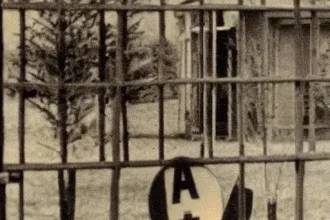In a world increasingly saturated with sleek, minimalist designs, where the automotive interior often leans towards a sea of anonymous black and beige, a remarkable pattern is staging an audacious return. We’re talking about houndstooth – a design historically synonymous with sartorial elegance and a subtle rebellion against the mundane. Far from being a mere relic of the past, the houndstooth car interior is currently experiencing a vibrant resurgence, driving a powerful wave of individuality and sophisticated charm across the automotive landscape. This isn’t just a fleeting trend; it’s a confident declaration of style, blending timeless heritage with a distinctly modern sensibility, captivating both enthusiasts and everyday drivers seeking to infuse their vehicles with unparalleled character.
For decades, this distinctive tessellation, often perceived as the hallmark of a bygone era, was relegated to the realm of vintage luxury, primarily cherished by collectors and connoisseurs. Yet, a palpable shift is underway, propelled by a collective yearning for authenticity, tactile richness, and a bespoke aesthetic that mass production often overlooks. Consumers are increasingly demanding more than just functionality; they seek an emotional connection, a statement piece that reflects their personality and taste. By thoughtfully integrating insights from contemporary design movements and a profound appreciation for automotive history, houndstooth is being reimagined, proving its enduring appeal and remarkable adaptability. It’s truly a testament to how classic patterns can transcend time, offering a fresh, sophisticated alternative to conventional cabin aesthetics.
| Category | Details |
|---|---|
| Origin & History | A duotone textile pattern characterized by broken checks or abstract four-pointed shapes, originating in the Scottish Lowlands in the 19th century. Initially worn by shepherds as outer garments of woven wool. |
| Fashion Icon Status | Elevated to high fashion by designers like Christian Dior and Coco Chanel in the 20th century, symbolizing luxury, sophistication, and timeless elegance. |
| Automotive Heritage | Famously featured in classic sports cars, most notably various Porsche 911 models from the 1960s and 70s (e.g., the 911 Targa 4S Heritage Design Edition), where it became an iconic upholstery option, adding a distinct racing pedigree. |
| Modern Resurgence Drivers | A blend of nostalgia for classic aesthetics, a desire for unique customization, increased demand for sustainable and durable materials, and a shift away from generic interior designs. |
| Design Versatility | Can be applied subtly in accents or boldly across seats and door panels, offering a spectrum of visual impact. Available in traditional black/white or modern color combinations. |
| Reference Link | Porsche Classic Magazine ー Houndstooth |
A Rich Tapestry of History and High Fashion
The journey of houndstooth from the rugged Scottish Highlands to the plush cabins of luxury vehicles is a fascinating narrative of cultural evolution. Originally a simple, durable weave for shepherds’ cloaks in the 19th century, its distinctive broken check pattern soon caught the discerning eye of the fashion world. Iconic figures like Coco Chanel famously integrated it into her collections, transforming it into an undisputed symbol of sophistication. Christian Dior, too, utilized its graphic appeal to underscore his revolutionary “New Look.” In the automotive realm, houndstooth found a spiritual home in the performance-oriented interiors of legendary vehicles, particularly early Porsche 911 models. This association cemented its status, evoking an era of spirited driving and understated elegance that continues to resonate powerfully with enthusiasts today.
The Resurgence: More Than Just Retro Appeal
Why now? The current surge in popularity for the houndstooth car interior is multifaceted, reflecting deeper societal trends. Firstly, there’s a profound yearning for authenticity and heritage in an increasingly digital world. People are actively seeking products with a story, a connection to a rich past, and houndstooth delivers this in spades. Secondly, the pattern’s inherent versatility is incredibly effective. It can be bold and dramatic in larger scales and contrasting colors, or subtly understated when rendered in monochromatic tones or smaller patterns, allowing for diverse applications across various car models and trim levels. “This isn’t merely a nostalgic throwback,” explains Dr. Lena Karlsson, a respected automotive textile historian, “but a conscious move towards embracing textures and patterns that offer tactile luxury and a visual depth often missing in modern, uniform interiors. It speaks to a desire for something genuinely unique.”
Beyond aesthetics, the practical benefits are equally compelling. Traditionally woven from wool, houndstooth fabrics boast remarkable durability and a natural resistance to wear and tear, aligning perfectly with contemporary demands for sustainable and long-lasting materials. This inherent robustness makes it a remarkably practical choice for high-traffic areas within a vehicle, promising longevity that synthetic alternatives often struggle to match. By embracing houndstooth, manufacturers and customizers are not just making a style statement; they are also quietly endorsing a commitment to quality and environmental consciousness. This blend of timeless design and tangible benefits positions houndstooth as a forward-thinking choice for discerning consumers.
Driving the Future: Customization and Conscious Design
The future of the houndstooth car interior looks incredibly bright, particularly in the burgeoning segments of electric vehicles and bespoke luxury customization. As the automotive industry shifts towards more personalized experiences, houndstooth offers an unparalleled canvas for expression. Imagine an electric vehicle, often criticized for its clinical interiors, suddenly imbued with the warm, inviting character of houndstooth seating, perhaps paired with natural wood or brushed metal accents. This juxtaposition creates a remarkably compelling aesthetic, bridging the gap between cutting-edge technology and enduring craftsmanship. Customization shops are already witnessing a surge in requests for this pattern, transforming standard cabins into truly unique sanctuaries on wheels. From seat inserts and headliners to door panel accents and floor mats, the possibilities for integrating this iconic pattern are virtually limitless, allowing owners to curate an interior that is as distinctive as their own fingerprint.
Leading automotive design houses and luxury brands are beginning to take note, understanding that the allure of houndstooth extends far beyond its historical context. They recognize its potential to elevate a vehicle’s perceived value and inject a dose of character that resonates deeply with discerning buyers. By integrating houndstooth, they are not just selling a car; they are selling a lifestyle, a statement of refined taste and confident individuality. This strategic embrace of classic patterns, reinterpreted for the modern era, represents a persuasive vision for the future of automotive design – one that values tradition while boldly innovating. The enduring appeal of houndstooth serves as a powerful reminder that true style is timeless, capable of reinventing itself and consistently captivating new generations of admirers.






